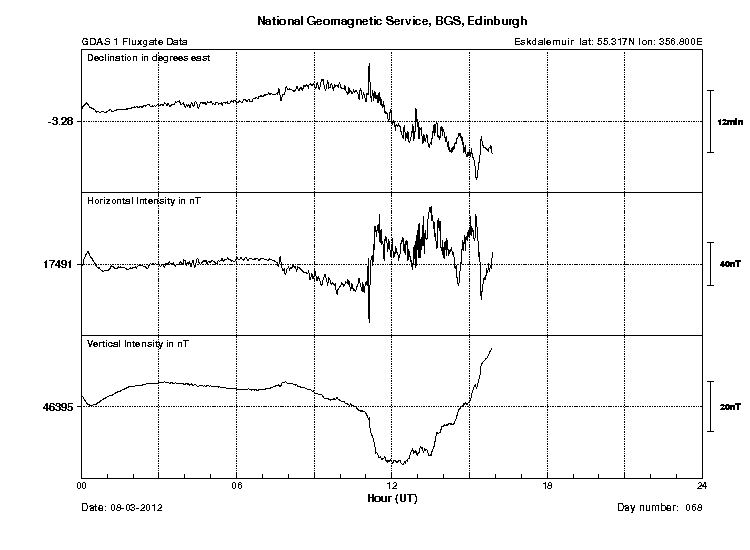Space Weather Update - 8th March 2012
What Has Happened?
The anticipated arrival of a interplanetary coronal mass ejection (ICME) associated with the large X5.4 solar flare on the 7th March impacted the Earth's magnetic field at 11:03 UT this morning (8th March).
This took approximatly 34 and a half hours to travel from Sun to Earth and had an estimated shock arrival speed of 1300km/s.
The interplanetary shock wave created a sudden impulse in the geomagnetic field known as a Storm Sudden Commencement (SSC). This was recorded at the BGS UK magnetic observatories and simultaneously at observatories around the world. At Eskdalemuir in the Scottish Borders the horizontal strength of the magnetic field changed suddenly by almost 59nT.
Since then the magnetic cloud following the shock, as measured by the ACE spacecraft, has been configured in such a way that restricts the transfer of energy from the ICME into the Earth's magnetic field. As such, the geomagnetic activity level following the SSC has so far been relatively weak.
This can still change,so the chance of displays of the Northern Lights (aurora borealis) remains higher than usual tonight.
Sign-up to receive Geomagnetic Disturbance Alert emails.
Follow us on Twitter:
Follow @BGSauroraAlert for more occasional aurora alerts.
Follow @BGSspaceWeather for daily space weather forecasts.


